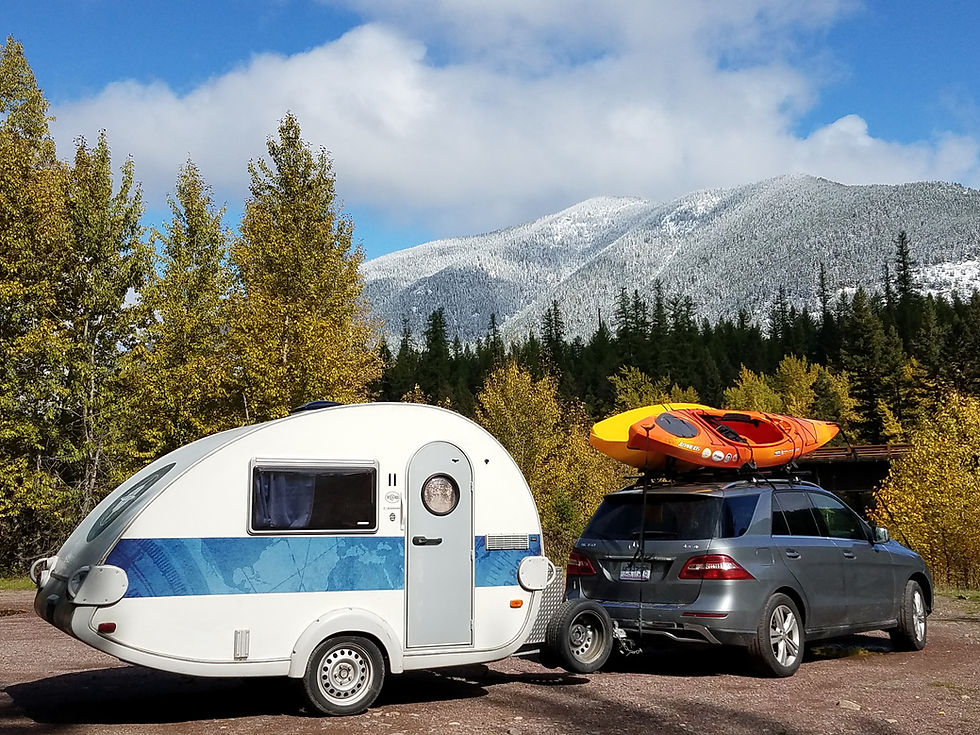Great Camping! A long-awaited return to Johnson’s Shut-Ins
- Sarah Tucker
- Oct 1, 2018
- 3 min read
by: Debra Gray

Johnson’s Shut-Ins State Park, tucked away in a national forest in Southeast Missouri, offers camping facilities that exceed many state parks. The park’s wilderness qualities and ancient geology make it a special place to visit. I visited the shut-ins for the first time in the 1980's. We were unable to spend much time there, but I knew I wanted to go back and camp. Life got busy with raising a family and living overseas for several years, so the return came many years later. What we found was one of the best state park campgrounds that you’ll find anywhere.
In December 2005 the dam failed at Taum Sauk Reservoir, a hydroelectric power facility, releasing 1.3 billion gallons shing down the mountainside. The avalanche of water destroyed everything in its path, including the campgrounds.

Specialists were brought into restore the state park and surrounding area. The new campgrounds opened in 2010, relocated to a higher elevation so flooding won’t be a problem in the future.
The new campground is great! There are five loops offering different types of camping. One of the more interesting loops is for truly primitive camping. It is a walk-in site with wooden platforms on which to pitch a tent.

There are loops for basic campsites, campsites that offer only electricity, and pull-through sites with sewer, electric and water services. There is even a special loop for equestrian campers. Every campsite has a cement pad for campers and cars. Campsites have lantern stands, as well as a picnic table and fire rings.
There are many hiking trails in or near the park, but the biggest attraction is the shut-ins. We waded and climbed the boulders. Many families, even with small children, were enjoying the shut-ins. The park limits the number of days that visitors may stay, unless you have a camping pass that gets you priority.
History of Johnson's Shut Ins
The rugged terrain and rushing rivers of the St. Francois Mountains once attracted Osage hunters, but did not appeal to most settlers from the East. They often preferred to settle first in the flatter, more fertile Mississippi and Missouri River valleys.
The Johnston family was among the early Scots-Irish settlers in this area that came west from the hilly countryside of Appalachia in search of better land. Here they found fertile valleys, vast uncut forests and plenty of room for homesteading. By 1829, they had established a farm. Three generations of Johnston (the “t” was later dropped) families once worked this land and 36 members of the family are buried in the small cemetery in the park. By 1900, many of the families that formed the self-sufficient community of Monterey moved away. Eventually, St. Louis resident Joseph Desloge bought much of the land, donating it for a state park in 1955.
In December 2005, the main use area in the East Fork of the Black River valley was changed dramatically. The nearby Taum Sauk Reservoir, a hydroelectric power station, breached, sending 1.3 billion gallons of water down Proffit Mountain. The water, carrying tons of trees, debris and boulders, scoured the mountainside and destroyed or extensively damaged facilities in the park, including the campground. It also altered the landscape of the valley and the East Fork of the Black River in the park. This event changed the park forever and has become part of the history of Johnson’s Shut-Ins State Park. This area of the park has been redeveloped and many of the features and facilities in the main day-use area are the result of this redevelopment.


















